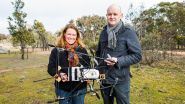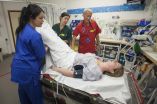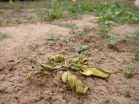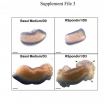INFORMATION:
Photos are available on request and a video can be viewed on the ANU YouTube channel.
FOR INTERVIEW:
Dr Debra Saunders
ANU Fenner School of Environment and Society
T: +61 2 6125 2635
E: debbie.saunders@anu.edu.au
Victoria Hollick
Media and Public Relations Adviser
The University of Sydney
T: +61 2 9351 2579
E: Victoria.hollick@sydney.edu.au
For media assistance, call the ANU media hotline on +61 2 6125 7979.
Drones used to track wildlife
2015-08-25
(Press-News.org) Researchers at The Australian National University (ANU) and The University of Sydney have developed a world-first radio-tracking drone to locate radio-tagged wildlife.
Lead researcher Dr Debbie Saunders from the ANU Fenner School of Environment and Society said the drones have successfully detected tiny radio transmitters weighing as little as one gram. The system has been tested by tracking bettongs at the Mulligan's Flat woodland sanctuary in Canberra.
"The small aerial robot will allow researchers to more rapidly and accurately find tagged wildlife, gain insights into movements of some of the world's smallest and least known species, and access areas that are otherwise inaccessible," Dr Saunders said.
"We have done more than 150 test flights and have demonstrated how the drones can find and map the locations of animals with radio tags."
Researcher Oliver Cliff, from the Australian Centre for Field Robotics (ACFR) at the University of Sydney, said the technology had generated international interest.
"Lots of people are trying to do this. It is not an easy process, but we believe we've come up with a solution," he said.
"We've had interest in our system from all around the world. We are still doing some fine tuning but we've achieved more than has ever been done before, which is exciting."
Dr Saunders, a wildlife ecologist, came up with the idea eight years ago to track small dynamic migratory birds such as the endangered swift parrot.
The new system, funded by an ARC Linkage Project Grant and Loro Parque Foundacion, has been built and tested over the past two and a half years with Dr Robert Fitch and his team at the ACFR at the University of Sydney.
The robot consists of an off-the-shelf drone or unmanned aerial vehicle (UAV). The custom-built miniature receiver and antenna provide real-time information on radio-tracked wildlife, which are mapped live on a laptop.
ANU Associate Professor Adrian Manning, also from the Fenner School of Environment and Society, has helped the team by attaching VHF and GPS collars on bettongs at Mulligan's Flat.
"Radio tracking of collars manually is very time consuming," Associate Professor Manning said.
"Early indications are that the drones could save a huge amount of time. If you have two operators working and they can put the drone up in two bursts of 20 minutes, they can do what would take half a day or more to do using ground methods."
Details of the new research tool were presented at Robotics: Science and Systems.
ELSE PRESS RELEASES FROM THIS DATE:
Record-high pressure reveals secrets of matter
2015-08-25
A research team at Linköping University, together with colleagues in Europe and the United States, has shown that at extremely high pressure even the innermost electrons in the atomic nuclei of the metal osmium begin to interact with each other, a phenomenon never witnessed before. The findings have been published in Nature.
"If we know more about how a matter works, we will be in a better position to develop materials that withstand extreme conditions. In research we're constantly making advances, but in this case we've taken a giant leap", says Igor Abrikosov, ...
EPSRC funding boost to aid discovery of new advanced materials
2015-08-25
A new £6.65 million grant for research aimed at accelerating the discovery and application of new advanced materials for the energy sector was announced today by the Engineering and Physical Sciences Research Council (EPSRC).
The grant, awarded to a team led by Professor Matthew Rosseinsky of the University of Liverpool, will support a programme, Integration of Computation and Experiment for Accelerated Materials Discovery.
Professor Rosseinsky will head up an expert team at Liverpool and University College London that will work to tackle the challenge of designing ...
Lemon juice and human norovirus
2015-08-25
Noroviruses are the predominant cause of gastroenteritis outbreaks in community settings such as hospitals, cruise ships, and schools. The virus is extremely contagious and is mostly transmitted via "fecal-oral-route", i.e., through contaminated hands or contaminated food. Symptoms include violent and sudden onset of diarrhea, vomiting, and nausea.
"It is therefore important to provide a safe and harmless disinfectant against human norovirus," explains Grant Hansman, head of CHS junior research group at the German Cancer Research Center noroviruses and the University ...
Patients with abnormally fast heart rhythms to benefit from modification of treatment
2015-08-25
A simple, safe and cost-free modification to a physical technique used to treat patients in the emergency department with an abnormally fast heart rhythm could improve its effectiveness by more than a quarter, according to a study published in The Lancet today (25 August 2015).
An abnormally fast heart rhythm, also called supraventricular tachycardia, can be distressing for patients and many come to emergency departments for treatment. Symptoms can include chest pain, light-headedness, dizziness and breathlessness. Episodes can last from a few seconds or, in extreme cases, ...
Flu remedies help combat E. coli bacteria
2015-08-25
This news release is available in German. Trillions of bacteria populate the human gut - which makes them more common than any other cells in our body. The composition of this bacterial population is very variable and influenced by our diet. Diseases, but also antibiotic treatments can induce significant shifts in this equilibrium. If entire bacterial groups suddenly multiply heavily, critical situations occur. They damage the intestinal tissue and cause inflammations. How such shifts are triggered largely remained a mystery. Physiologists from the University of Zurich ...
A community of soil bacteria saves plants from root rot
2015-08-25
This news release is available in German.
Root bacteria are known to form symbiotic relationships with plants by improving the plants' supply of nutrients. Yet as scientists at the Max Planck Institute for Chemical Ecology in Jena, Germany, found recently, the bacteria actually play a much more profound role. During field experiments in Utah, in the western USA, researchers discovered that the right mixture of soil microbiota directly influences the survival of Nicotiana attenuata, a species of wild tobacco. Plants that had been unable to establish a protective ...
Gut feeling restored by growth outside the body
2015-08-25
University of Manchester scientists have bridged a gap between two separate pieces of small intestine kept alive outside the body, in an advance which could have implications for surgery in human adults and babies.
It is not currently possible to study the intestine in embryos when inside the body, which holds back advances in treatment for conditions causing damage in infants. However, new techniques used by the researchers in this study have allowed organs to be kept alive and grown on supports which allow the absorption of nutrients.
A video is available here
or ...
How TV's subliminal influence can affect women's perception of pregnancy, birth
2015-08-25
In an era where popular culture is increasingly recognized for its impact on lay understanding of health and medicine, few scholars have looked at television's powerful role in the creation of patient expectations, especially regarding pregnancy and birth.
As part of a larger research project funded by a National Science Foundation Dissertation Improvement Grant, Danielle Bessett, University of Cincinnati assistant professor of sociology in the McMicken College of Arts and Sciences examined how women understand their television viewing practices regarding pregnancy and ...
Another milestone in hybrid artificial photosynthesis
2015-08-25
A team of researchers at the U.S. Department of Energy (DOE)'s Lawrence Berkeley National Laboratory (Berkeley Lab) developing a bioinorganic hybrid approach to artificial photosynthesis have achieved another milestone. Having generated quite a buzz with their hybrid system of semiconducting nanowires and bacteria that used electrons to synthesize carbon dioxide into acetate, the team has now developed a hybrid system that produces renewable molecular hydrogen and uses it to synthesize carbon dioxide into methane, the primary constituent of natural gas.
"This study represents ...
Waterford AD research suggests measuring macular pigment potential biomarker of cognitive health
2015-08-25
Waterford, Ireland, August 24, 2015 - Ongoing European Research Council-funded research at Waterford Institute of Technology's (WIT) Macular Pigment Research Group (MPRG) is investigating the potential link between cognitive function and levels of a vital eye pigment linked to diet. The study suggests that measuring macular pigment offers potential as a biomarker of cognitive health. The results of this study are highlighted to a global audience through the prestigious international medical journal, the Journal of Alzheimer's Disease.
The Waterford clinical trial research, ...





